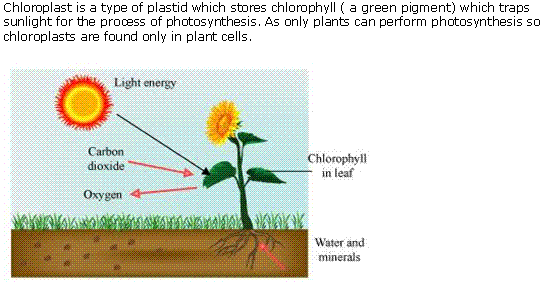Chapter 8 - Cell - Structure And Functions Exercise 98
Solution 1
(a) Unicellular organisms have one-celled body. True
Concept insight: Organisms made up of single cell are called unicellular organisms whereas organisms made up of more than one cell are called multicellular organisms.
(b) Muscle cells are branched. True
Concept insight: Recall different shapes of cells.
(c) The basic living unit of an organism is an organ. False
Concept insight: Basic unit of life is cell.
(d) Amoeba has irregular shape. True
Concept insight: Recall different shapes of cells.
Concept insight: Organisms made up of single cell are called unicellular organisms whereas organisms made up of more than one cell are called multicellular organisms.
(b) Muscle cells are branched. True
Concept insight: Recall different shapes of cells.
(c) The basic living unit of an organism is an organ. False
Concept insight: Basic unit of life is cell.
(d) Amoeba has irregular shape. True
Concept insight: Recall different shapes of cells.
Solution 2

Concept insight: Recall different types of cells.
Solution 3

Concept insight: List the parts of the cell.
Solution 4
Cytoplasm is the part of the cell that contains various cell organelles such as mitochondria, ribosomes, Golgi bodies, etc. Cytoplasm is a fluid that fills the cell and occurs between the plasma membrane and the nucleus.
Concept insight: Cytoplasm is a jelly-like substance in which all the cell organelles are suspended.
Concept insight: Cytoplasm is a jelly-like substance in which all the cell organelles are suspended.
Solution 5
Animal cell
|
Plant cell
|
(i) |
(i) |
| (ii) They are generally small in size. | (ii) They are usually larger than animal cells. |
| (iii) Cell wall is absent. | (iii) Cell wall is present. |
| (iv) Vacuoles are small in size. | (iv) Vacuoles are larger in size. |
| (v) No other animal cell possesses plastids except for the protozoan Euglena. | (v) Plastids are present. |
Concept insight: List the differences between animal cell and plant cell.
Solution 6
Prokaryotes
|
Eukaryotes
|
| (i) Most prokaryotes are unicellular. | (i) Most eukaryotes are multicellular. |
| (ii) The nucleus is poorly defined due to the absence of a nuclear membrane. | (ii) The nucleus is well defined and is surrounded by a nuclear membrane. |
| (iii) Nucleolus is absent | (iii) Nucleolus is present. |
| (iv) Cell organelles such as plastids, mitochondria, Golgi bodies, etc. are absent. | (iv) Cell organelles such as plastids, mitochondria, Golgi bodies, etc. are present. |
| (v) Bacteria and blue-green algae are prokaryotic cells. | (v) Fungi, plant, and animal cells are eukaryotic cells. |
Solution 7
The nucleus contains thread-like structures called chromosomes. Chromosomes play an important role in the inheritance of characters. They carry genes that help in the transfer of characters from the parents to the offspring.
Concept insight: Recall the structure and functions of nucleus.
Concept insight: Recall the structure and functions of nucleus.
Solution 8
A cell is the smallest unit of life and is capable of all life functions. Cells are the building blocks of life. This is the reason why cells are referred to as 'the basic structural and functional units of life'. All cells vary in their shapes, sizes, and activities they perform. In fact, the shape and size of the cell is related to the specific function it performs.
Concept insight: Cell is the structural and functional unit of life.
Concept insight: Cell is the structural and functional unit of life.
Solution 9

Concept insight: Chloroplasts are the cell organelles in plants that contains green pigment called chlorophyll.
Solution 10

Concept insight: Important from Exam Point of View.
Comments
Post a Comment